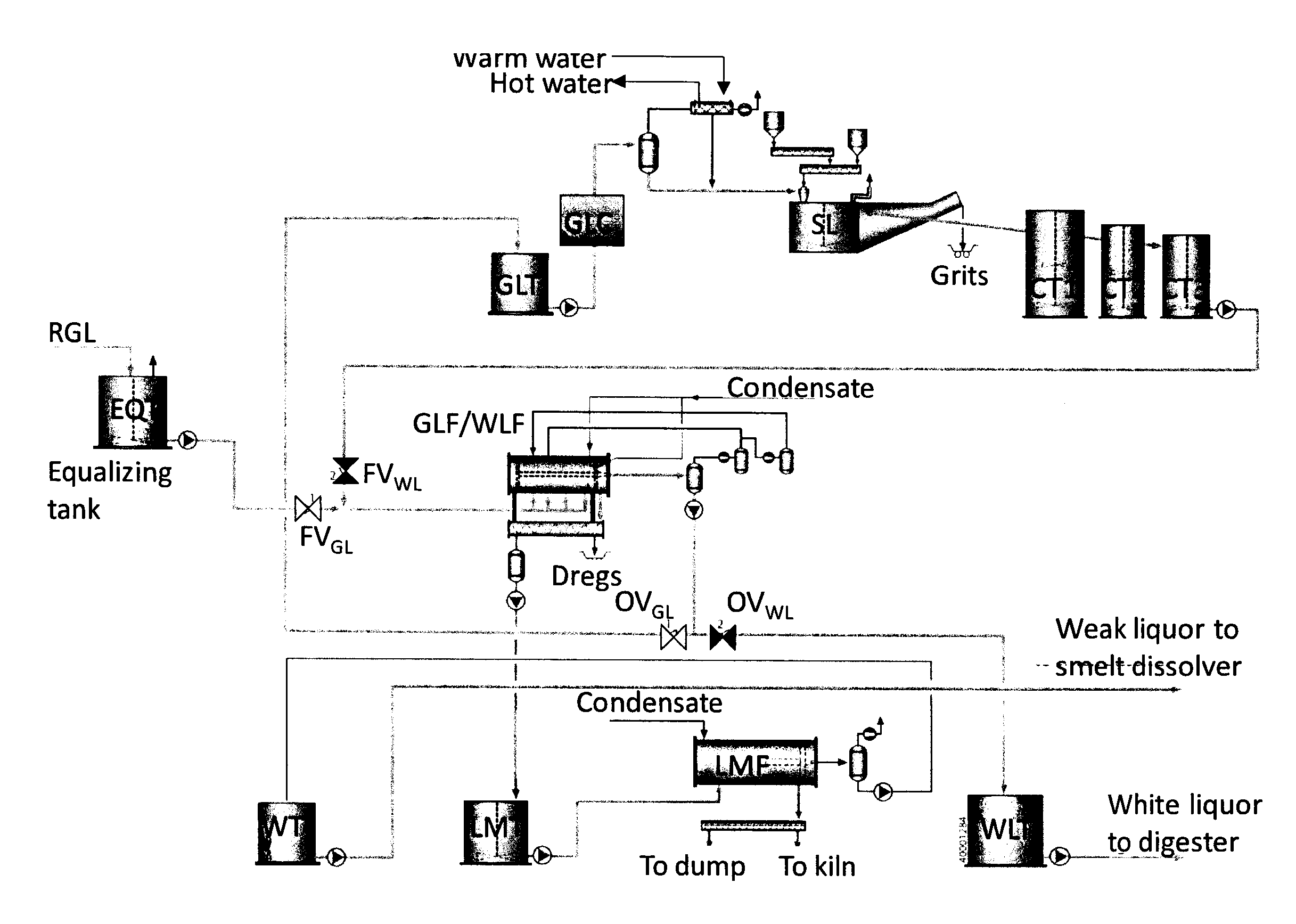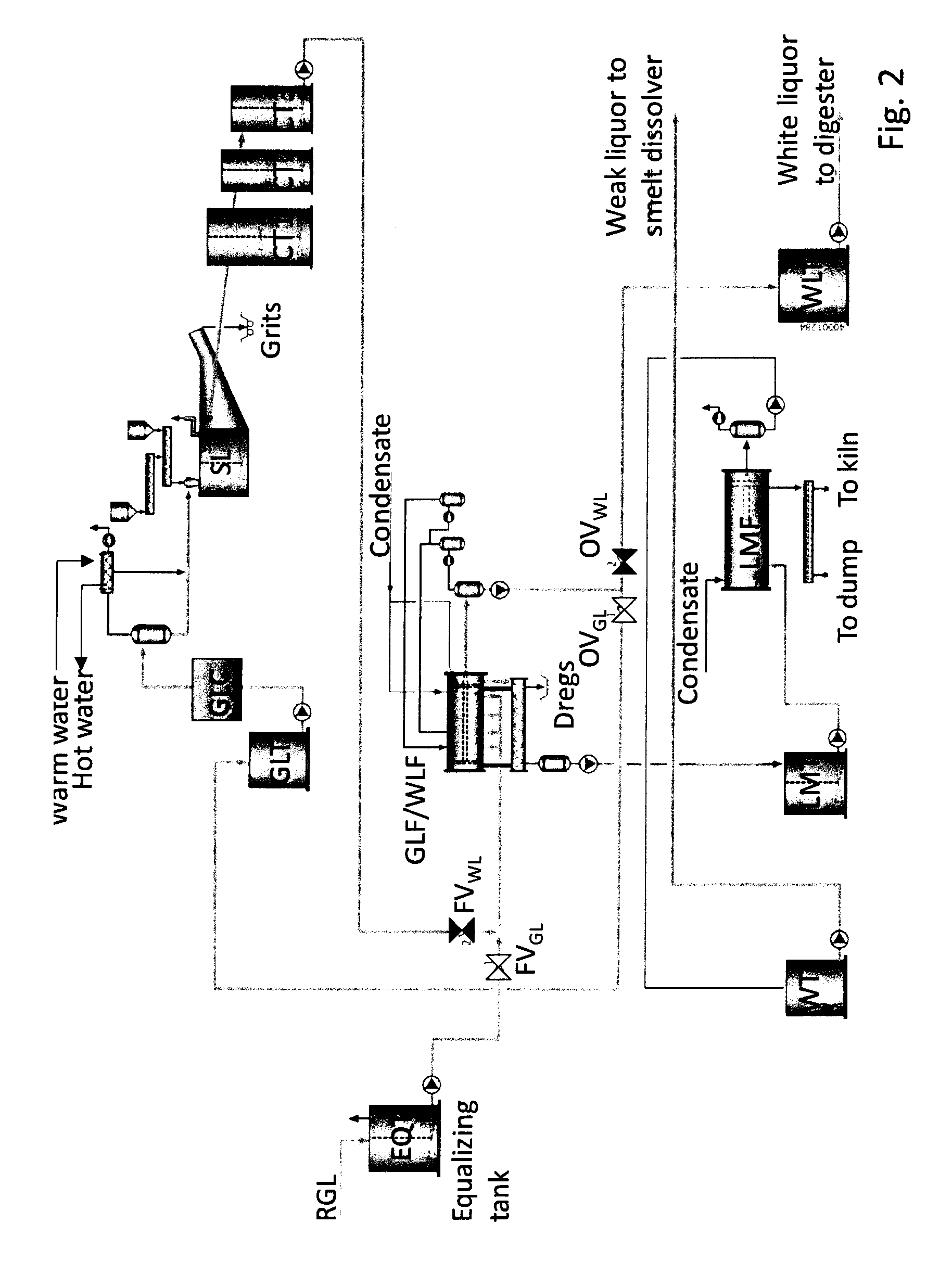Method for the causticizing process for producing white liquor
a white liquor and causticizing technology, applied in the field of white liquor preparation, can solve the problems of high cost of white liquor filtration and green liquor filtration, high cost of these filters, and many different and dedicated separation apparatuses, and achieve low residual alkali, low cost, and efficient green liquor separation process
- Summary
- Abstract
- Description
- Claims
- Application Information
AI Technical Summary
Benefits of technology
Problems solved by technology
Method used
Image
Examples
Embodiment Construction
[0035]The inventive method is described in connection with a system set up as shown in FIG. 2. In here is one single common filter apparatus GLF / WLF used for the green and white liquor cycles.
[0036]The raw green liquor RGL is first received in an equalizing tank EQT and from there pumped to the green liquor separation process when the feed valve for green liquor FVGL is open and the feed valve for white liquor FVWL is closed (black valves indicate closed status). The separation process is here shown implemented in a pressurized disc filter GLF / WLF. The common filter apparatus GLF / WLF now operating as a green liquor filter separates out dregs from the raw green liquor and produces clear green liquor sent to a green liquor storage tank GLT when the output valve for green liquor OVGL is open and the output valve for white liquor OVWL is closed. The clear green liquor is then sent, most often via a green liquor cooler GLC, to the slaker SL where burnt lime is mixed into the green liquor...
PUM
| Property | Measurement | Unit |
|---|---|---|
| volume | aaaaa | aaaaa |
| thickness | aaaaa | aaaaa |
| distance | aaaaa | aaaaa |
Abstract
Description
Claims
Application Information
 Login to View More
Login to View More - R&D
- Intellectual Property
- Life Sciences
- Materials
- Tech Scout
- Unparalleled Data Quality
- Higher Quality Content
- 60% Fewer Hallucinations
Browse by: Latest US Patents, China's latest patents, Technical Efficacy Thesaurus, Application Domain, Technology Topic, Popular Technical Reports.
© 2025 PatSnap. All rights reserved.Legal|Privacy policy|Modern Slavery Act Transparency Statement|Sitemap|About US| Contact US: help@patsnap.com



